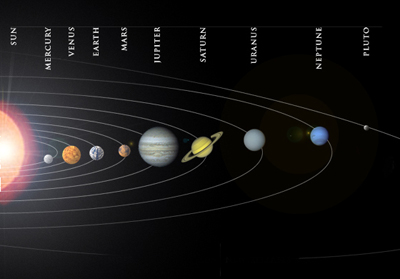Haven't you ever wondered why do planets and other heavenly bodies revolve around the sun?? Do you know why do they rotate themselves??
You might find the reason behind why they revolve around the sun or any star in any lower grade geography book. Yeah.
First let us talk about the condition of planets, stars, asteroids, comets and other heavenly bodies just after the formation of this Universe. According to the Big Bang theory, there were no planets, no stars and other bodies before. Instead, there was a single condensed mass of matter which exploded into millions of pieces. Each piece travelled at a very high speed in a straight line. These pieces were made up of hot gases or primitive particles like protons or helium. On cooling, they condensed again to form rough spherical masses. That's what we call "planet".
Now, while the spherical mass is moving at a high speed in one direction, they are attracted by a body whose mass is several times heavier than the spherical mass. So the direction of motion of the spherical body tends to change. At one stage, when the velocity of the spherical body(planet) is perpendicular to the force of attraction of the heavier mass(star), the body presumes a circular path. This is the origin of revolution.
This things is what everyone knows, right? But practically most planets have elliptical orbit rather than circular orbits. Why?? Let's see again.
See, as in the previous case, imagine a planet revolving around a star in circular orbit. Now an asteroid or some smaller body hits the planet and gets attached. What happens?? The centre of mass of the planet will be altered.
The sun pulls a planet around itself not by its surface, but by its centre of mass. If the planet's surface were alone pulled by the sun, they the surface would have been detached from the planet and would revolve in a separate orbit. So the sun's gravity acts on the "Centre of mass" of the planet. If the centre of mass of a planet is altered by any means, then the trajectory of the orbit changes to ellipse!
Depending upon the quantity of mass that got added up, the eccentricity of the elliptical orbit of various planets differ.
Visit this site for an interactive study of eccentricity and elliptical trajectory of a planet.
http://windows2universe.org/physical_science/physics/mechanics/orbit/orbit_shape_interactive.html

No comments:
Post a Comment